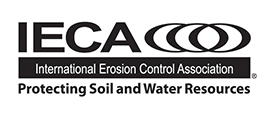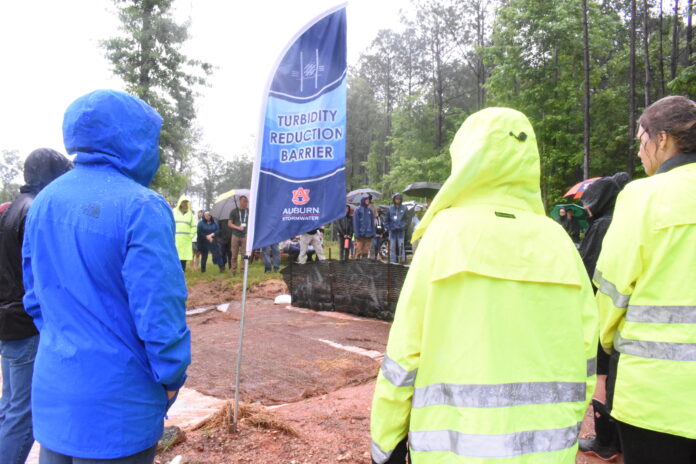Erosion and sediment control (E&SC) practices are critical for construction stormwater management and downstream pollution mitigation. There is much debate in our industry about what E&SCs should be considered “best” management practices (BMPs). Education and outreach are a key component of federal, state and municipal permitting. To better communicate and demonstrate best practices, hands-on training events are used to help contractors, designers and inspectors better understand BMPs. In some cases, these are field day demonstrations from stormwater contractors and product manufacturers, and others get attendees involved in installations and test demonstrations. These events provide opportunities to witness how BMPs perform in simulated or, in some “lucky” years (Figure 1), actual rain events. The events included here are associated with a stormwater-related organization, research entity or a regulatory body that had outcomes specific to that state or municipality with the intent of providing technology transfer of BMPs or emerging technologies.
Auburn University Installer Training and Field Day Events
The Auburn University Installer Training and Field Day are separate, yet connected, events held annually at the Auburn
University — Stormwater Research Facility (AU-SRF) in Opelika, Alabama, USA. Since 2014, AU has trained thousands locally, nationally and internationally. The events’ successes have been impacted by industry partners like the International Erosion Control Association (IECA), industry professionals that provide vendor and sponsor support and the Alabama Department of Transportation (ALDOT), a substantial AU-
SRF research sponsor. During these events, AU-SRF researchers demonstrate emerging techniques and industry manufacturers present the newest technologies meant to improve the performance of construction stormwater BMPs.
The Installer Training event (Figure 2) is a 1.5-day classroom/hands-on hybrid training event focusing on proper installation techniques of E&SCs. The half-day classroom session discusses what they are used for, expected performance, considerations for implementation, potential failure and maintenance considerations. The hands-on full-day portion occurs at the AU-SRF, where attendees install the E&SCs. Simulated flows and rainfall will then show attendees how these practices perform. The Field Day (Figure 3) is a one-day event that typically follows the Installer Training. Field Day is held at the AU-SRF and showcases the practices installed at Installer Training, in addition to demonstrations by vendors. Participants observe how practices should be installed through exploration of techniques and live demonstrations.
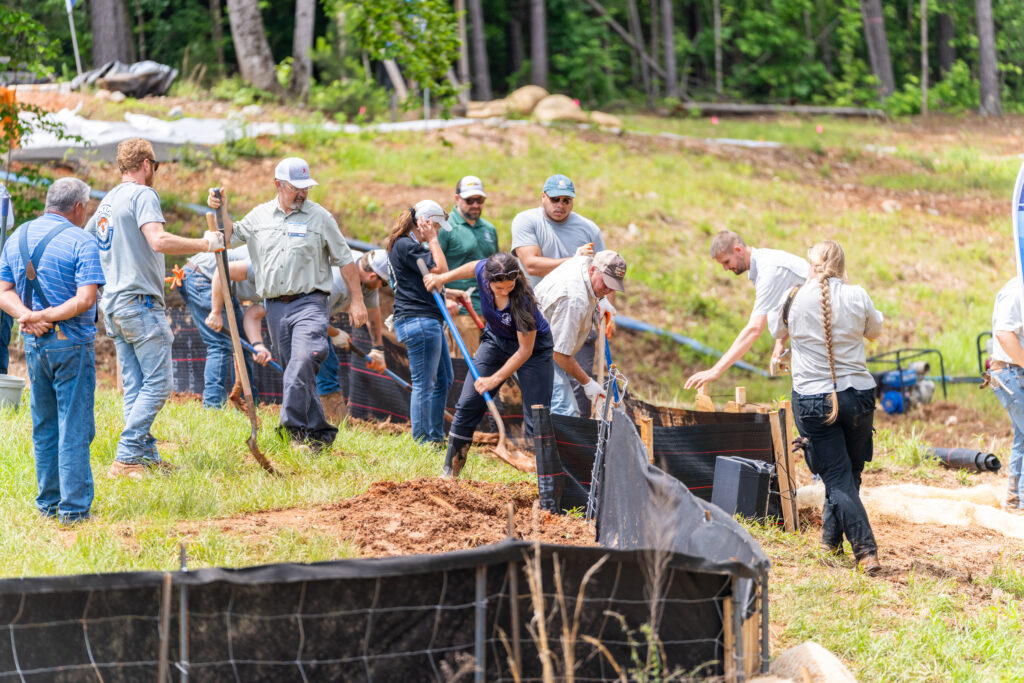
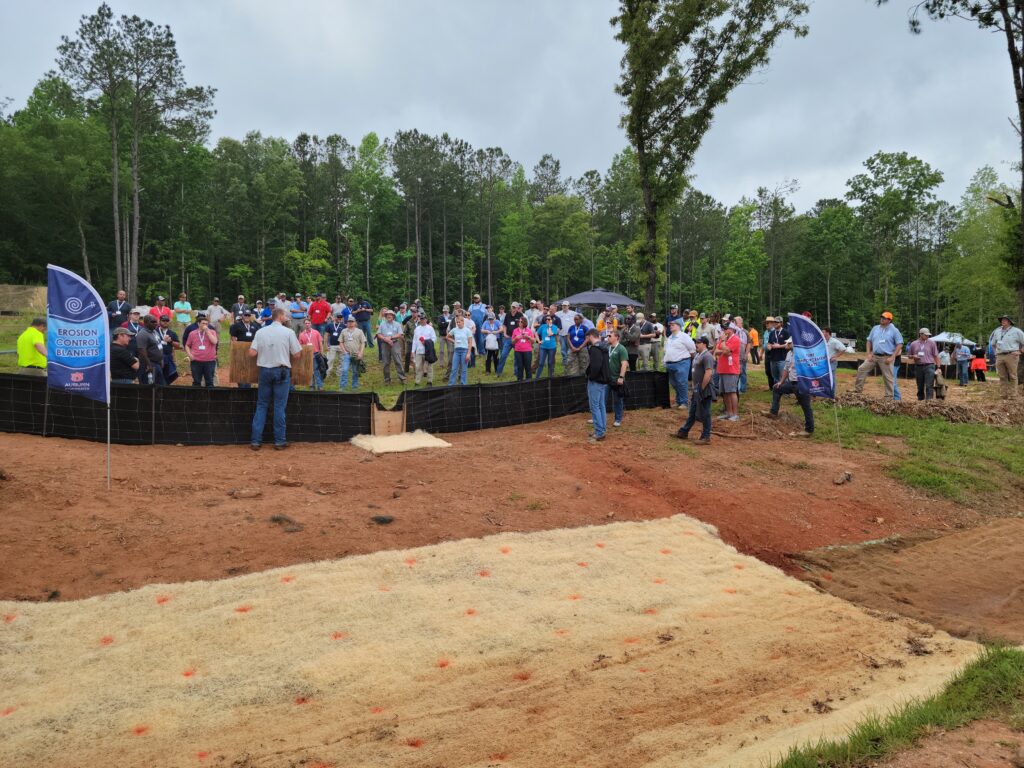
Many of the standards developed at the AU-SRF have been adopted by ALDOT and the Alabama Handbook for Erosion Control, Sediment Control and Stormwater Management on Construction Sites and Urban Areas (The Blue Book), providing a unified approach regarding ESCs in Alabama and enhancing the value of the training event. Other notable partnerships (Figure 4) include state stormwater agencies, such as the Alabama Soil and Water Conservation Committee and the Alabama Stormwater Association, and Thompson Engineering, which oversees a construction stormwater inspection certification in the state. The research at AU-SRF is also funded by other state DOTs, including Iowa and Nebraska, along with federal agencies such as the Environmental Protection Agency, Department of Agriculture (USDA) and the Federal Highway Administration. These connections provide opportunities to educate and impact stormwater professionals beyond Alabama.
Bowling Green Muddy Water Blues The city of Bowling Green, Kentucky, USA, hosted the Kentucky Muddy Water Blues (KYMWB) starting in 2019 as part of their Municipal Separate Storm Sewer System (MS4) permit program. This event, one of over 150 classes and field days the city has presented, demonstrates nonproprietary BMP installations, exhibits products and provides regulatory updates. These field days are held at a city-owned site and active construction sites, with the former preferred. The target audience was erosion prevention and sediment control (EPSC) contractors certified by the city that are required to attend at least one event every four years.
In 2024, the city MS4 program sent eight attendees to the AU Installer Training and Field Day (Figure 5). Auburn inspired the city to create a permanent city-managed site with an accessible water source and space to accommodate BMP stations that allowed hands-on training. The city-owned Glen Lily Landfill, a closed landfill and borrow area, checked these boxes but had no previously existing “jobsite” characteristics. A local contractor volunteered to provide equipment and operators for initial grading so these demonstrations could be included in the upcoming 2024 KYMWB event, which was considered a resounding success.
Stormwater runoff flow and pollution management is critical to the city. Therefore, common BMPs, such as silt fences, ditch checks, surface stabilization methods, outlet protection and good housekeeping, were represented (Figure 6). The city sits atop karst geological features allowing runoff injection into groundwater streams through crevices, fissures and caves, which is spotlighted at their event. Local contractors must, therefore, understand how to protect the city’s groundwater and cave ecosystems with injection well BMPs.
Starting in 2025, the city is budgeting to add weatherproof storage and covered concrete pads to allow for on-location hybrid educational opportunities, and it is steering away from the classroom-based approach. Attendees will participate in in-field instruction, with hands-on installer training and certification as the goal by 2026.
OK Contractor Construction Compliance Conference (C4)
In 2022, the Oklahoma (USA) Department of Transportation (OK DOT) initiated the Contractor Construction Compliance Conference (C4). It started as a presentation-based conference to get contractors, DOT, regulators, the research community, consultants and vendors to discuss environmental compliance. In 2024, the Conference added interactive demonstrations to showcase installing and maintaining BMPs by partnering with Oklahoma State University (OSU) to create a program similar to AU-SRFs (Figure 7). Other C4 partners included the Oklahoma Turnpike Authority, Oklahoma Department of Environmental Quality and Association of Oklahoma General Contractors (AOGC). Each partner pulled from their industry sectors to ensure a range of perspectives and education. More than 30 OSU students helped install nonproprietary practices, introduce sediment into the flow for demonstrations and direct traffic. AOGC helped connect the C4 planning team with a local contractor that provided portable potties and a hand-washing station, while local manufacturers and vendors provided demonstration materials and installation assistance.
The half-day event was hosted at the Agroclimate and Hydraulics Research Unit of the USDA Agriculture Research Service. It relied on gravity-fed flow from Lake Carl Blackwell in Stillwater, Oklahoma, USA, to demonstrate BMP function and performance under channelized flow conditions. A 2025 full-day event will provide the opportunity for hands-on BMP installation education and see these practices perform under live flow conditions.
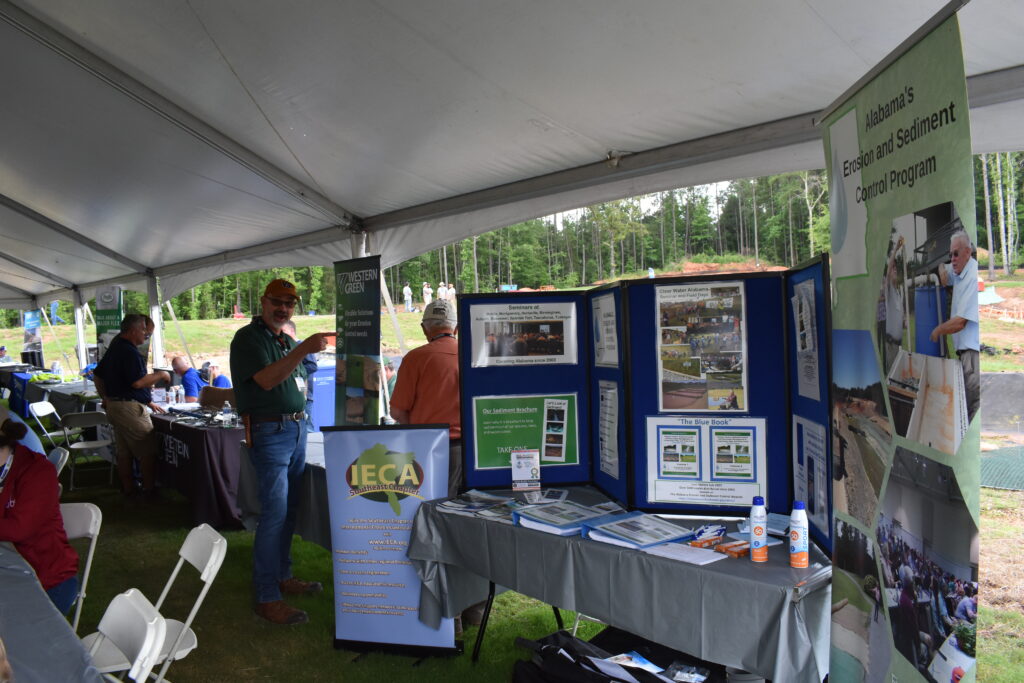
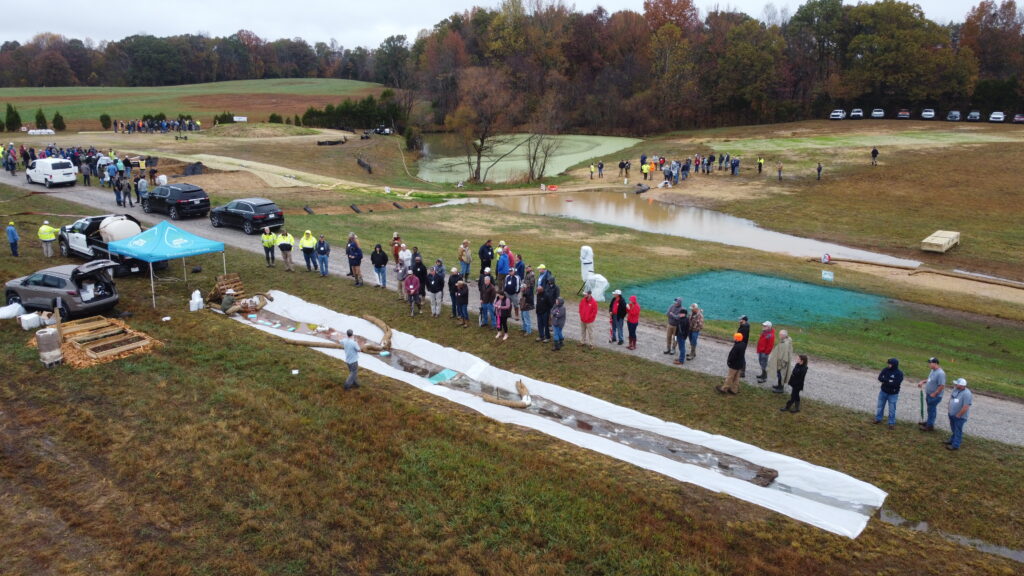

Industry Support
Industry partners were key to the success of these events and included professional organizations, manufacturers, engineering firms and E&SC suppliers (Figure 8). Vendors provided substantial support; however, vendors that aren’t local may require travel days to attend and would prefer to travel on weekdays. Also, when vendors consider competing events, they may not skip a known event for an upstart one.
Vendors will jump at sponsorship opportunities, particularly if there are additional benefits like prominently displaying their company names and logos or allowing opportunities to address attendees. Provide networking opportunities, such as making personal introductions to key industry professionals who could benefit from the vendor’s offerings or hosting an after-hours event for vendors. These also provide a way to better understand what vendors hope to achieve from your events. By enriching these relationships, there’s a greater likelihood of repeat participation and recommendations for the event to peers.
Considerations for Implementing Hands-on or Field Day Events
There are strategies that may increase your chances of success. Don’t be afraid to start small. If you don’t overpromise in the first iteration, you’re likely to have highly satisfied participants who recommend future events to coworkers and peers.
Planning is essential. Focus on maximizing the experience for attendees. Create a comfortable learning environment. If space is limited, consider capping attendance. For outdoor events, rent large tents and restroom facilities if needed. Providing meals, drinks and snacks can enhance the experience and allow attendees to network. Sponsors may help cover these costs, but be sure to acknowledge their support. This sponsorship can help keep costs low for attendees, further broadening the attendance base. Event costs may include printing instructional materials, renting tents, tables chairs, installation materials and equipment rental costs, as well as personnel’s time. Getting material donations can help keep costs low. Typical attendance cost can range from $50–$250 (USD) per person for field day events. Installer training-type events that are longer and smaller groups can cost $300–$500 (USD) per person. Keep your event lean with the help of your sponsors and partners.
Ask for help. Learning what didn’t go as planned can be just as valuable as other information, as the city of Bowling Green and OSU staff learned from the AU-SRF.
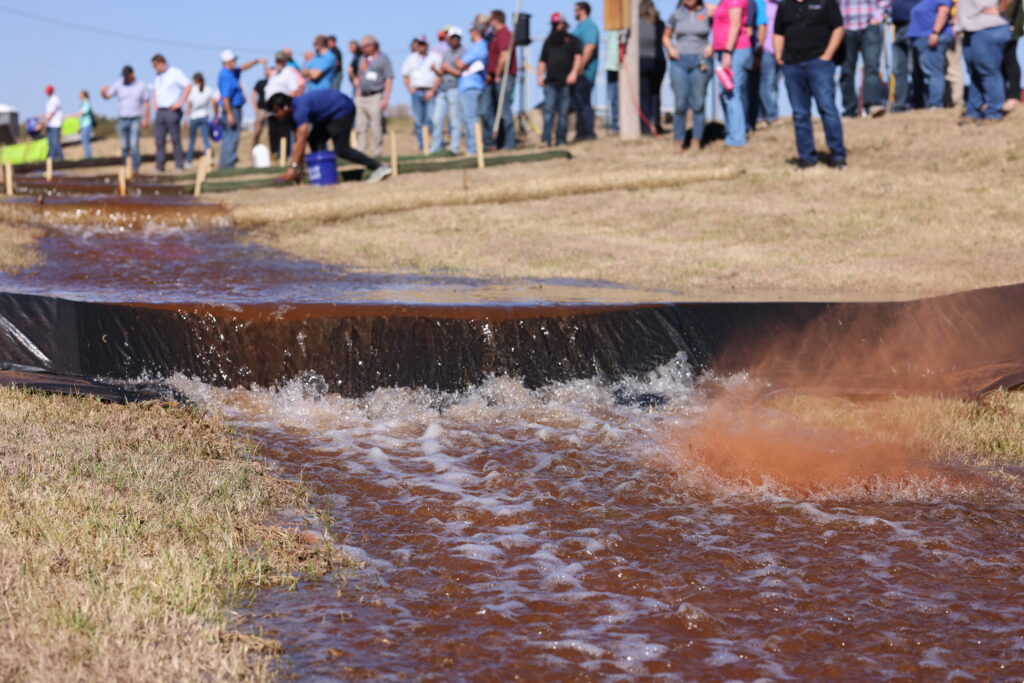
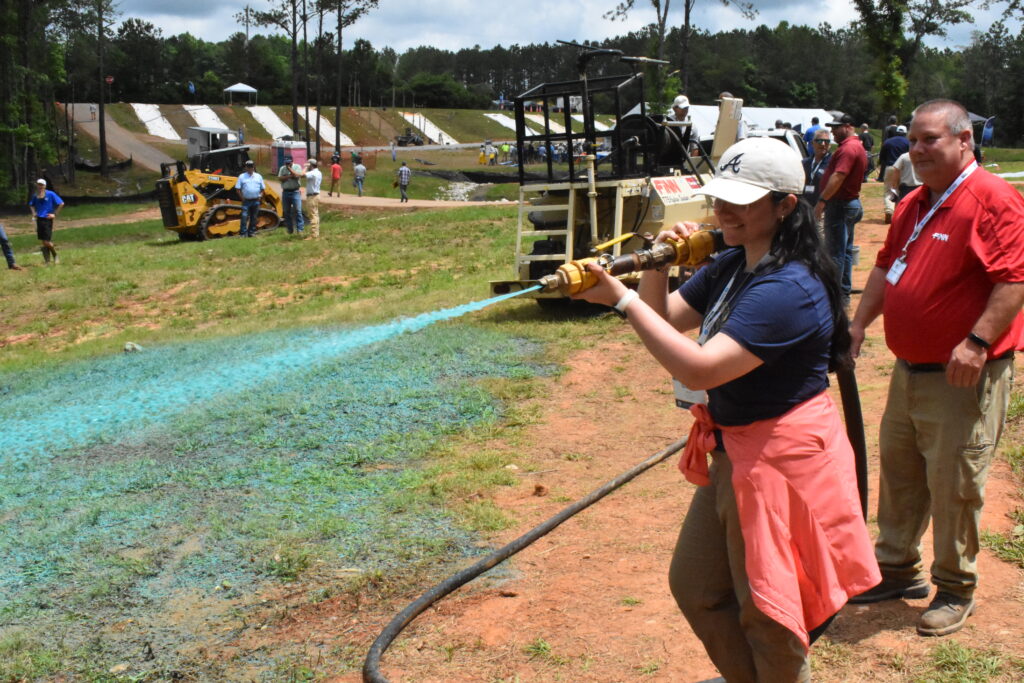
About the Experts
- Wesley Donald, Ph.D., is a Research Fellow in the Department of Civil and Environmental Engineering at Auburn University.
- Courtenay Howell, CESSWI, is an environmental inspector for the City of Bowling Green Public Works.
- Jaime Schussler, Ph.D., PE, CPESC, is an assistant professor in Civil and Environmental Engineering at Oklahoma State University.
- John Slupecki is a Regional Manager at Motz Enterprises, Inc.
Resources
- Auburn University – Stormwater Research Facility (AU-SRF) Field Day ieca.org/2025auburnfielddayAU-SRF Installer Training ieca.org/2025auburninstaller
- City of Bowling Green, Kentucky, USA, Erosion Prevention and Sediment Control Certification Program bgky.org/epsc
- Oklahoma State University Contractor Construction Compliance Conference bit.ly/4ah93p5
- Schussler Stormwater Lab linkedin.com/company/schussler-stormwater-lab

